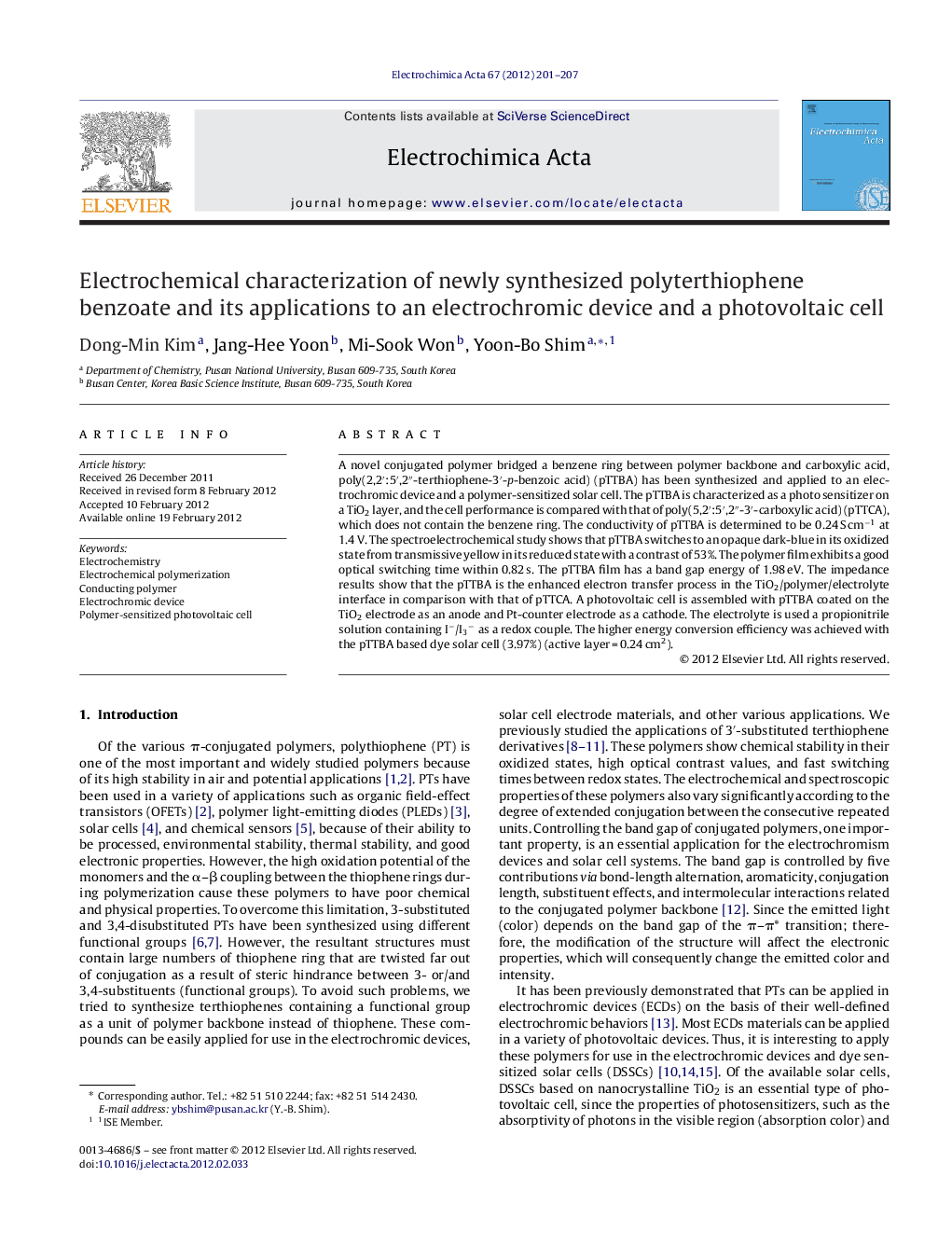| Article ID | Journal | Published Year | Pages | File Type |
|---|---|---|---|---|
| 188907 | Electrochimica Acta | 2012 | 7 Pages |
A novel conjugated polymer bridged a benzene ring between polymer backbone and carboxylic acid, poly(2,2′:5′,2″-terthiophene-3′-p-benzoic acid) (pTTBA) has been synthesized and applied to an electrochromic device and a polymer-sensitized solar cell. The pTTBA is characterized as a photo sensitizer on a TiO2 layer, and the cell performance is compared with that of poly(5,2′:5′,2″-3′-carboxylic acid) (pTTCA), which does not contain the benzene ring. The conductivity of pTTBA is determined to be 0.24 S cm−1 at 1.4 V. The spectroelectrochemical study shows that pTTBA switches to an opaque dark-blue in its oxidized state from transmissive yellow in its reduced state with a contrast of 53%. The polymer film exhibits a good optical switching time within 0.82 s. The pTTBA film has a band gap energy of 1.98 eV. The impedance results show that the pTTBA is the enhanced electron transfer process in the TiO2/polymer/electrolyte interface in comparison with that of pTTCA. A photovoltaic cell is assembled with pTTBA coated on the TiO2 electrode as an anode and Pt-counter electrode as a cathode. The electrolyte is used a propionitrile solution containing I−/I3− as a redox couple. The higher energy conversion efficiency was achieved with the pTTBA based dye solar cell (3.97%) (active layer = 0.24 cm2).
